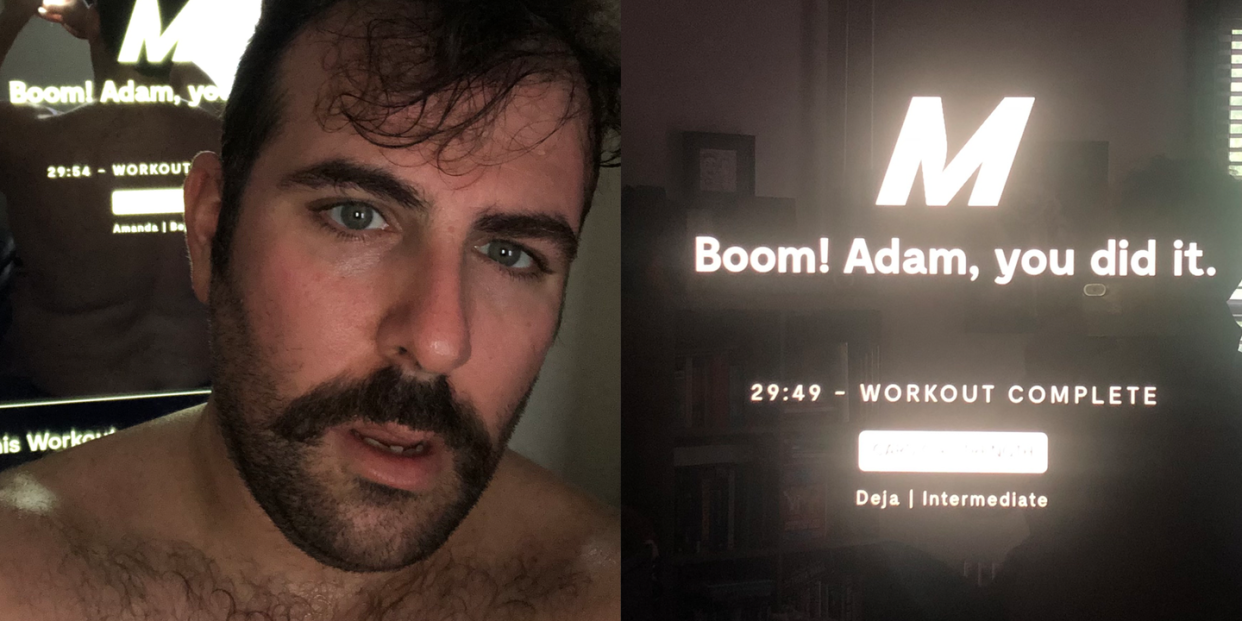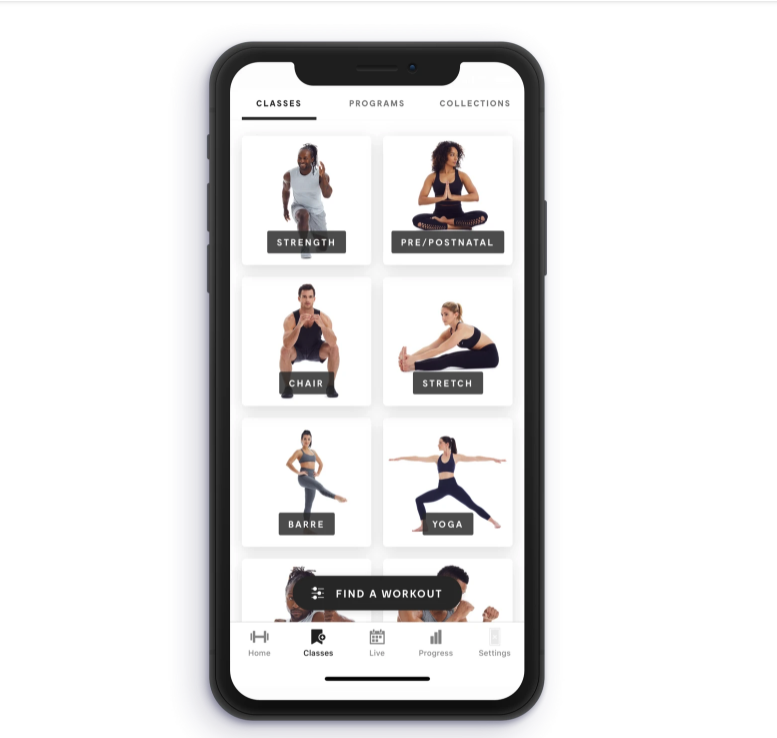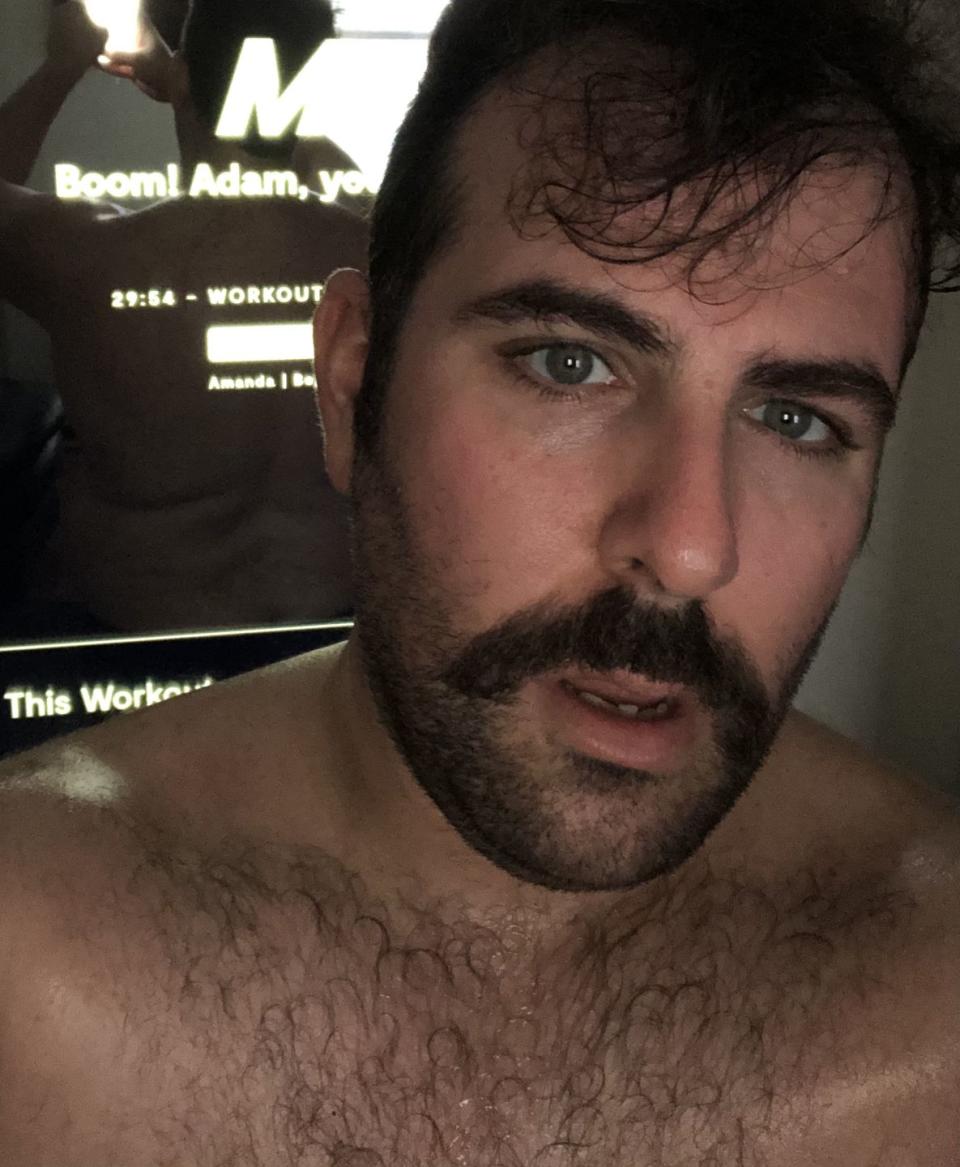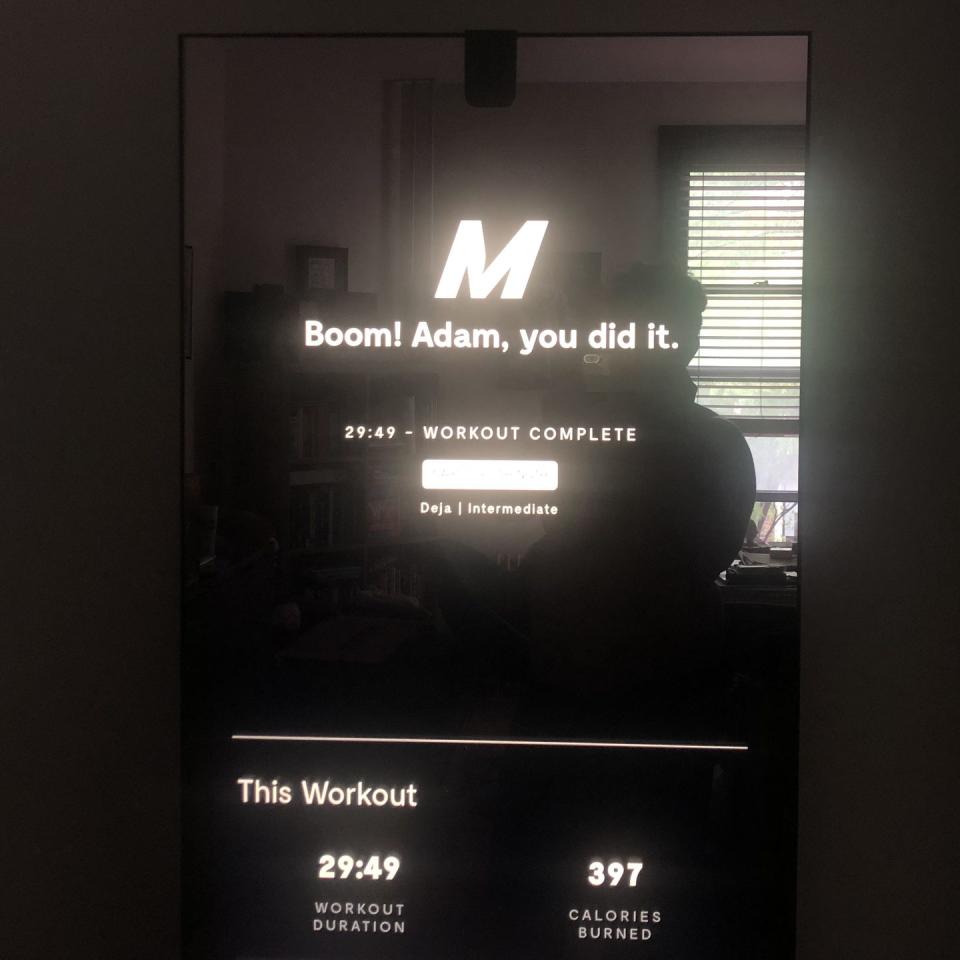I Tried ‘The Mirror’ Workouts to Get Back in Shape After My Diabetes Diagnosis

“Hearst Magazines and Verizon Media may earn commission or revenue on some items through the links below.”
This is not going to be one of those weight loss transformation articles where I go from having a gut to a six-pack in four weeks. My story is a tad less physically drastic. After nearly a year of minimal exercise (thanks, pandemic) and being diagnosed with type 2 diabetes last fall, I knew I would never be able to take control of my health if I didn’t get moving again.
So I spent a month testing out The Mirror to reacquaint myself with fitness. If you haven’t seen the ads or the incredibly hilarious SNL skit, The Mirror is a home gym that features live and on-demand classes through an app taught by certified trainers across the country.
Even prior to the pandemic, I was perpetually on a quest to lose weight; it was something I constantly struggled with throughout my childhood and teen years. I didn’t establish a gym routine until I came out as gay after college and felt pressure to slim down to better fit into (what I thought back then) a 20-something New York City gay boy should look like.
As I got older and the weight creeped back on, my mother warned me to take better care of myself because diabetes runs rampant in our family, but I figured my regular workouts and generally watching what I eat would be enough to keep me from sealing my genetic fate. But the diagnosis came from my doctor after a general physical last October.
My A1C—a blood test that measures average blood sugar levels over the past three months—was 9.3%. (The healthy level is 5.7% and below.) Daily blood sugar levels should be less than 100 mg/DL in the morning before any meals and I was up around 175 mg/DL when I was starting out. Having a metformin prescription was helping to bring that number down but after spending the better part of a year coping with the state of the world in an unhealthy way, I knew I needed to find a way to save myself. I also knew I couldn’t wait for the “return to normal” to make this happen.
Getting set up with The Mirror
Living in a New York City apartment, I don’t have a lot of space for a bulky piece of equipment, which is what first drew me to The Mirror. It takes up as much wall space as a typical floor length mirror and then it’s up to you to create an environment you can move around in. The app also offers a series of classes you can do while sitting in a chair if you don’t have much room to work with.

Once The Mirror is installed, you download the app and sync up your equipment. Accessing the classes, which range from barre workouts to tai chi exercises to pre/postnatal moves, costs an extra $39/month on top of the price you pay for the machine itself, which is around $1,495 plus tax. (For the purposes of this article, they graciously allowed me to try it out for free for a month.) After everything was set up and synced, I spent the next four weeks getting my body used to being active again, trying to bring down my blood sugar levels, and maybe even dropping a bit of weight. Here’s how it went.
Week 1: My body hates me
When I picked out my first Mirror class, I figured I could just jump into the 45-minute sessions on an intermediate level and be fine. Fifteen minutes later, I was panting and couldn’t really go on after a couple of rounds alternating between jumping jacks and squats. It was disappointing, but everyone has to start somewhere.
I downgraded to a 30-minute beginner class on my second go and, unfortunately, I had the same issue trying to get through high knees and lunges as the post warm-up exercises. Even the basic movements were tiring, but I was determined to power through. My doctor and dietitian both made it clear that even a small amount of exercise each day could work wonders for my blood sugar levels. I can beat myself up about not getting through a full class or I can flip it and celebrate the fact that I did something to work up a sweat and get my heart rate up.

With that in mind, I didn’t shame myself for settling into 15-minute workouts during my first week. I used the opportunity to explore the app and learn which instructors I prefer. In one session, I did a Pilates class with my boyfriend and quickly learned that our office/workout space is not ideal for two people at the same time.
Week 2: Catching up with cardio
Now that weekdays and weekends have become practically indistinguishable from one another (and basic cardio like walking through city streets is no longer part of my daily routine), I kicked off my Sunday with a 30-minute cardio and strength class. There was a lot of panting and sweating but I made it through the entire class.
That set the tone for the rest of the week because I kept going with the 30-minute classes and made it to the end of each one. Some days were more of a struggle than others. There were moments when I was grunting and groaning so much that my boyfriend came to check on me, but I kept going.
By the time I reached the end of the week, one of the biggest takeaways was learning that no two classes—even when taught by the same instructor—are the same. They may go through a lot of the same moves (so. much. squatting.) but when placed in a different order for varying lengths of time, it’s a totally different experience.
Week 3: Figuring out what works
Will exercise always feel like a chore? This question kept popping into my mind as I entered the third straight week of workouts. With two weeks of classes under my belt, I had a pretty good idea of the instructors I preferred (shoutout to Deja and Lance!) and the class intensity I could handle, but I wouldn’t say I was truly excited for the workouts.
Being able to preview all of the moves before starting the class was key for me, though. I have never liked burpees (who does?). It’s not that I didn’t want a challenge, I just preferred to focus on classes that I could finish, instead of emptying my tank on a few tough exercises.
Feeling like I was settling into a good groove with a mix of cardio and strength classes, I decided to try one that incorporated a kettlebell since it’s one of the few pieces of equipment I own. I completed the class, but then determined that I’m better off sticking to bodyweight workouts so I can focus on mastering my form. I was still having some difficulty maintaining balance while doing moves that required a lot of coordination, like curtsy lunges and crossjacks.
Week 4: Pushing my limit

Entering the final week of my month-long trial, I wanted to make the most of my workouts. I decided to level up to intermediate options—and the difference was significant. I was really forced to step out of my comfort zone and go harder.
One day it was a “plank and pop up” party, where Deja had us doing plank variations followed immediately by 30-second cardio spurts. Another day I did an EMOM (every minute on the minute) class, where we performed six-minute intervals alternating rounds of cardio and strength moves. The breaks felt few and far between and I found myself yelling at the screen because it felt like too much at the time. It wasn’t.
By mid-week, I felt a sense of accomplishment I hadn’t felt in a long time. Mountain climbers got more frequent, and I hated them as much as burpees, but I did as many as I could.
The bottom line
I won’t pretend that this month totally turned my fitness game around. There were days in that final week that I couldn’t keep up. Like any fitness class, the instructors on The Mirror encourage participants to give it their all. My most frequent instructor, Deja, likes to tell people, “There’s no shame in the modifying game.”
That quote was an important reminder to me that, even on days when I had to do push-ups from my knees, I still showed up. By the end of the month, I found my way back to fitness and a daily routine that I could handle. I shed a few pounds. My blood sugar levels were in range every morning.
But it did so much more than that. I found confidence again. I used the pandemic as an excuse to indulge my worst habits of eating poorly and spending most days on the couch. The Mirror wasn’t some magic solution that suddenly made me wake up every day excited to work out, but it provided me with the tools I needed to find myself again from a health perspective, both physically and mentally—something I hope to never take for granted again.
You Might Also Like

